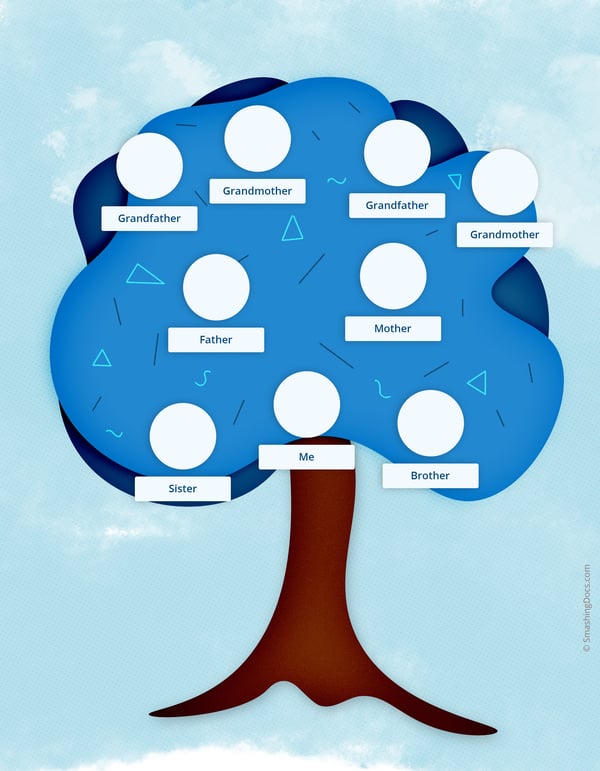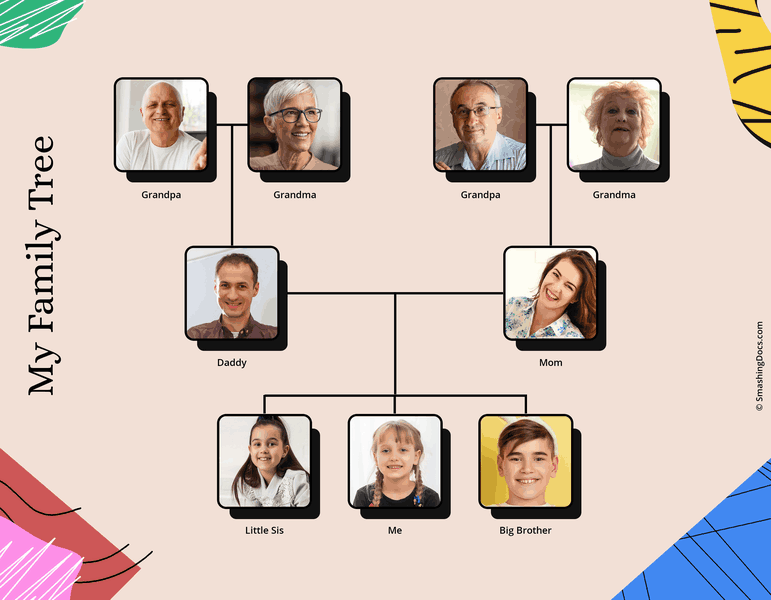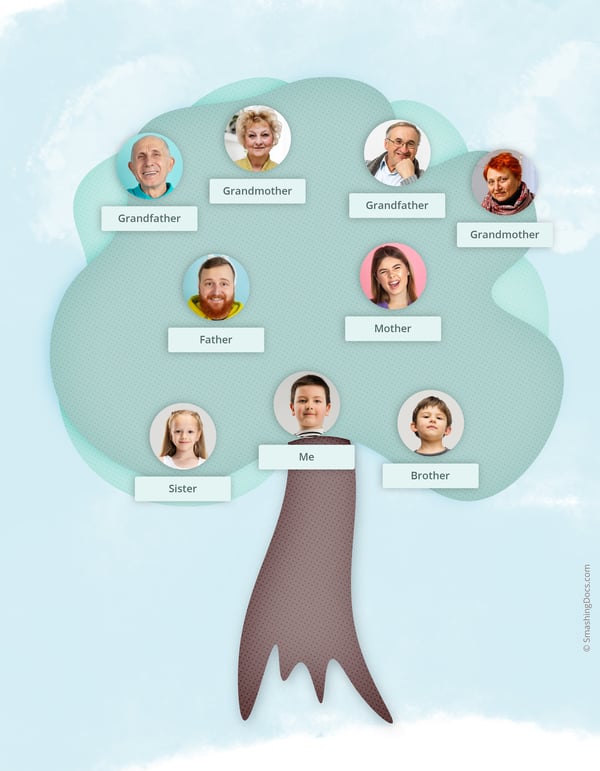
Go Back To Your Roots with a Family Tree Template
Trace your lineage and organize your family history using one of these fabulous free family tree templates. No special software installs needed.


Free Bright and Colorful Family Tree Template

Free Fun Family Tree Template
A Quick Guide to Researching Family Trees
With the release of DNA testing products such as 23andMe, Ancestry DNA, and FamilyTree DNA, tracking your lineage became a whole lot easier. But figuring out your biological ancestry is just part of the fun. You can also use your data to build a family tree.
Tips for Researching Family Trees
Essentially, a family tree is a visual depiction of your lineage and familial ties. Most of us know who our grandparents and great-grandparents were, but ancestry knowledge often ends here.
Family tree research will allow you to learn more about your family history and your own heritage, and will likely reveal many curious ancestral stories. So it’s definitely worth the effort!
To build a more comprehensive family tree, apply these quick research tips.
Start Hunting Around At Home
Dig through any family archives you already have. Photo albums, notebooks, postcards, and letters many of us have these mementos stashed somewhere in the attic. These can provide initial clues to who your ancestors were and identify close family ties.
Separately look into the official paperwork you have. Items such as death records, birth records, adoption papers, and immigration records can all be used when creating an accurate family tree.
Research Census Records
A census primarily keeps track of how many people lived in a certain area at one time. It’s also a helpful tool to establish who lived exactly where and for how long. The US Census Bureau has an extensive collection of digitized records. Use these to trace where different members have lived and how they moved around the country.
Get Death Records
In general, death records are the most common type of record as they are the most recent.
They tend to be much more common than birth records. Death records will also show information such as the names of a person’s birth parents, spouse, residence, occupation, cause of death, and even where they were buried. Just remember that when asking for a death record you will likely be charged a fee to access them.
Check Library Archives
Local library archives are especially helpful when your family has an extensive history of living in one area. Most towns are likely to have a public library or even an archival library that holds many records about its citizens. You can find items such as property deeds, business contracts, birth records, death records, and even tax records among the stored intel. These records will also usually lead to more information such as names of other family members, and their own birth and death records.
You can also go online and source information from popular ancestry databases such as FamilySearch and Ancestry.
Cross-Check Your Sources
Sometimes the information you find may contradict one another. For example, a deed record might say your distant cousin sold a house in Orange County in 1935 and left the area, but then a tax record would suggest he remained a local taxpayer. When sources have contradicting data, talk to your family more about it and see if you can cross-check the information.
Manage Your Expectations
Being eager to learn about your familial history is a wonderful thing, but you shouldn’t expect some miraculous discoveries. Sharing the last name with a celebrity or some royal doesn’t necessarily mean you have shared lineage. Your research may reveal that your ancestors had led ordinary lives, but don’t let this fact discourage you from doing further research! There’s a lot of beauty even in simple family stories.
Free Family Tree Templates to Map Your Ancestry
Make your research more delightful by transferring your finding to a family tree template. SmashingDocs designs are easy to customize in Word, meaning that you can easily add new leaves and branches to your tree as you discover more family stories!
